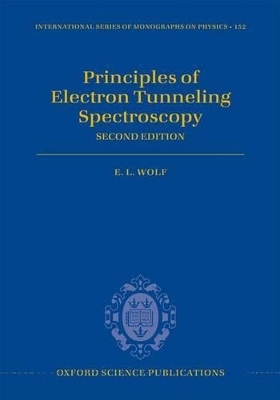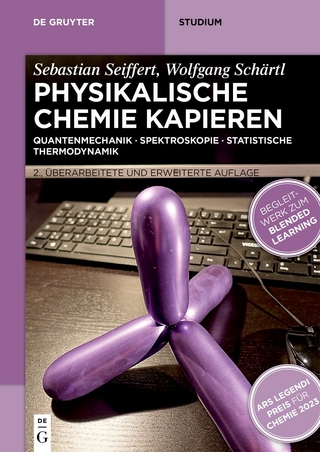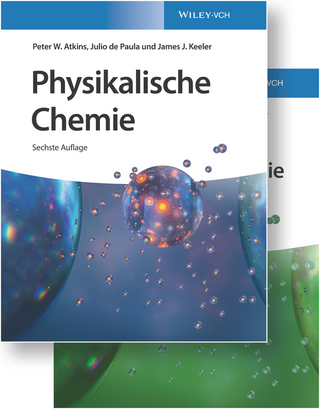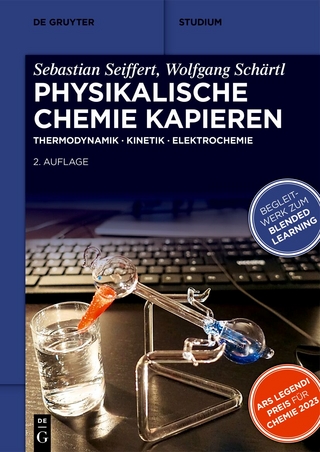
Principles of Electron Tunneling Spectroscopy
Second Edition
Seiten
2011
|
2nd Revised edition
Oxford University Press (Verlag)
978-0-19-958949-4 (ISBN)
Oxford University Press (Verlag)
978-0-19-958949-4 (ISBN)
Electron tunnelling spectroscopy as a research tool has strongly advanced understanding of superconductivity. This book explains the physics and instrumentation behind the advances illustrated in beautiful images of atoms, rings of atoms and exotic states in high temperature superconductors, and summarizes the state of knowledge that has resulted.
Electron tunnelling spectroscopy is a research tool which has strongly advanced understanding of superconductivity. With the invention of the scanning tunneling microscope, STM, by Nobelists G. Binnig and H. Rohrer, beautiful images of atoms, rings of atoms and of exotic states in high temperature superconductors have appeared. Some of the most famous images of any kind, at this date, are STM topographs. This book explains the physics and the instrumentation behind the advances illustrated in the famous images, and summarizes the state of knowledge that has resulted. It presents the current state of the art of tunneling- and scanning tunneling spectroscopies of atoms, molecules and especially superconductors.
The first edition of Principles of Electron Tunneling Spectroscopy has been a standard reference for active researchers for many years. This second edition fully embraces the advances represented by the scanning tunnelling microscope and, especially, scanning tunnelling spectroscopy. Stunning images of single atoms and spectral images of impurity states in high temperature superconductors will set this volume apart from its predecessor. The background and current status are provided for applications of Scanning Tunneling Microscopy and Spectroscopy to single atoms and molecules, including determination of bonding energies and vibrational frequencies. The applications to high temperature superconductivity are carefully introduced and the current status is described. A new section covers the astounding advances in instrumentation, which now routinely provide atomic resolution, and, in addition, developments in imaging and image processing, such as Fourier Transform Scanning Tunneling Spectroscopy.
Electron tunnelling spectroscopy is a research tool which has strongly advanced understanding of superconductivity. With the invention of the scanning tunneling microscope, STM, by Nobelists G. Binnig and H. Rohrer, beautiful images of atoms, rings of atoms and of exotic states in high temperature superconductors have appeared. Some of the most famous images of any kind, at this date, are STM topographs. This book explains the physics and the instrumentation behind the advances illustrated in the famous images, and summarizes the state of knowledge that has resulted. It presents the current state of the art of tunneling- and scanning tunneling spectroscopies of atoms, molecules and especially superconductors.
The first edition of Principles of Electron Tunneling Spectroscopy has been a standard reference for active researchers for many years. This second edition fully embraces the advances represented by the scanning tunnelling microscope and, especially, scanning tunnelling spectroscopy. Stunning images of single atoms and spectral images of impurity states in high temperature superconductors will set this volume apart from its predecessor. The background and current status are provided for applications of Scanning Tunneling Microscopy and Spectroscopy to single atoms and molecules, including determination of bonding energies and vibrational frequencies. The applications to high temperature superconductivity are carefully introduced and the current status is described. A new section covers the astounding advances in instrumentation, which now routinely provide atomic resolution, and, in addition, developments in imaging and image processing, such as Fourier Transform Scanning Tunneling Spectroscopy.
Edward Wolf is a condensed matter physicist with long career including industrial and academic, and administrative appointments. He is best known as an authority on electron tunneling spectroscopy, particularly including effects related to superconductivity and the superconducting proximity effect. He has specialized recently in physics related to nanotechnology. He is the author of over 100 research papers and has supervised Ph. D. thesis research of about a dozen students. His specialties include electron tunneling spectroscopy, the physics of superconductors, scanning tunneling microscopy and spectroscopy, and the physics and technology of nanoscale materials and devices. He is Fellow of the American Physical Society.
APPENDICES
| Reihe/Serie | International Series of Monographs on Physics ; 152 |
|---|---|
| Zusatzinfo | 236 b/w line and halftone illustrations, 4pp colour plate section |
| Verlagsort | Oxford |
| Sprache | englisch |
| Maße | 179 x 248 mm |
| Gewicht | 1366 g |
| Themenwelt | Naturwissenschaften ► Chemie ► Physikalische Chemie |
| Naturwissenschaften ► Physik / Astronomie ► Atom- / Kern- / Molekularphysik | |
| Naturwissenschaften ► Physik / Astronomie ► Festkörperphysik | |
| Naturwissenschaften ► Physik / Astronomie ► Thermodynamik | |
| Technik ► Maschinenbau | |
| ISBN-10 | 0-19-958949-6 / 0199589496 |
| ISBN-13 | 978-0-19-958949-4 / 9780199589494 |
| Zustand | Neuware |
| Haben Sie eine Frage zum Produkt? |
Mehr entdecken
aus dem Bereich
aus dem Bereich
Quantenmechanik | Spektroskopie | Statistische Thermodynamik
Buch | Softcover (2024)
De Gruyter (Verlag)
59,95 €
Set aus Lehrbuch und Arbeitsbuch
Buch | Hardcover (2022)
Wiley-VCH (Verlag)
109,00 €
Thermodynamik | Kinetik | Elektrochemie
Buch | Softcover (2024)
De Gruyter (Verlag)
59,95 €


